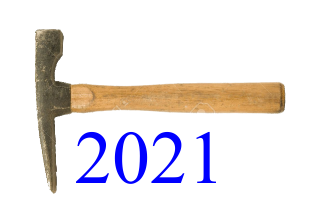Carrie鈥慐llen Gabriel

PhD
Ph. D. Thesis
(PDF - 10.2 Mb)
Losses of soil organic carbon (SOM) from mineral soils through depth have been documented following intensive forest harvesting practices such as clear-cut harvesting, and this has implications for global carbon cycling. SOM is thought to be primarily stabilized in mineral soils by binding with hydroxide minerals, although evidence has determined that SOM associated with particular pools of minerals can be destabilized. The observed losses likely result from soil climatic changes following clear-cutting, although specific mechanisms remain uncertain. In order to improve our mechanistic understanding, it is necessary to quantify and characterize the distribution of mineral-associated SOM pools in disturbed forest soils through depth, and to manipulate both biotic and abiotic factors to examine their impacts upon mineral soil C release. The distribution and character of mineral-associated SOM pools through depth from adjacent Mature (110 yr) and Young (35 yr) forests were measured, and short-term respiration responses and shifts in soil and dissolved organic carbon (DOC) chemistry were analysed to determine whether soil climate shifts could enhance SOM decomposition of the pools observed to be lost following harvesting. The impact of soil temperature and redox conditions on mineral soil carbon mobilization due to reductive dissolution was also investigated.Organo-metal complex (OMC) pools dominated the distribution of mineral SOM, with the highest content in illuvial horizons of the Mature compared to the Youngsite, which indicates that it is this pool that is lost following clear-cutting. Short-term incubations revealed that temperature sensitivity of soil respiration was highest in Bf horizons which could account for enhanced SOM losses due to microbial decomposition; however, OMC was not the source of C respired during short-term incubations. Enhanced DOC aromaticity was measured following incubation, especially after rewetting, and was also observed following incubation under anoxic conditions and in disturbed catchment streams. Chemical data suggest that reductive dissolution may account for the mobilization of surface OMC pools. Results from this research indicate that the mineral-associated pools that account for profile C storage could be susceptible to loss through decomposition and mobilization due to the changes in soil climatic conditions following forest clear-cut harvesting.
Keywords:
Pages: 226
Supervisors:聽Lisa Kellman, Anne-Marie Ryan



